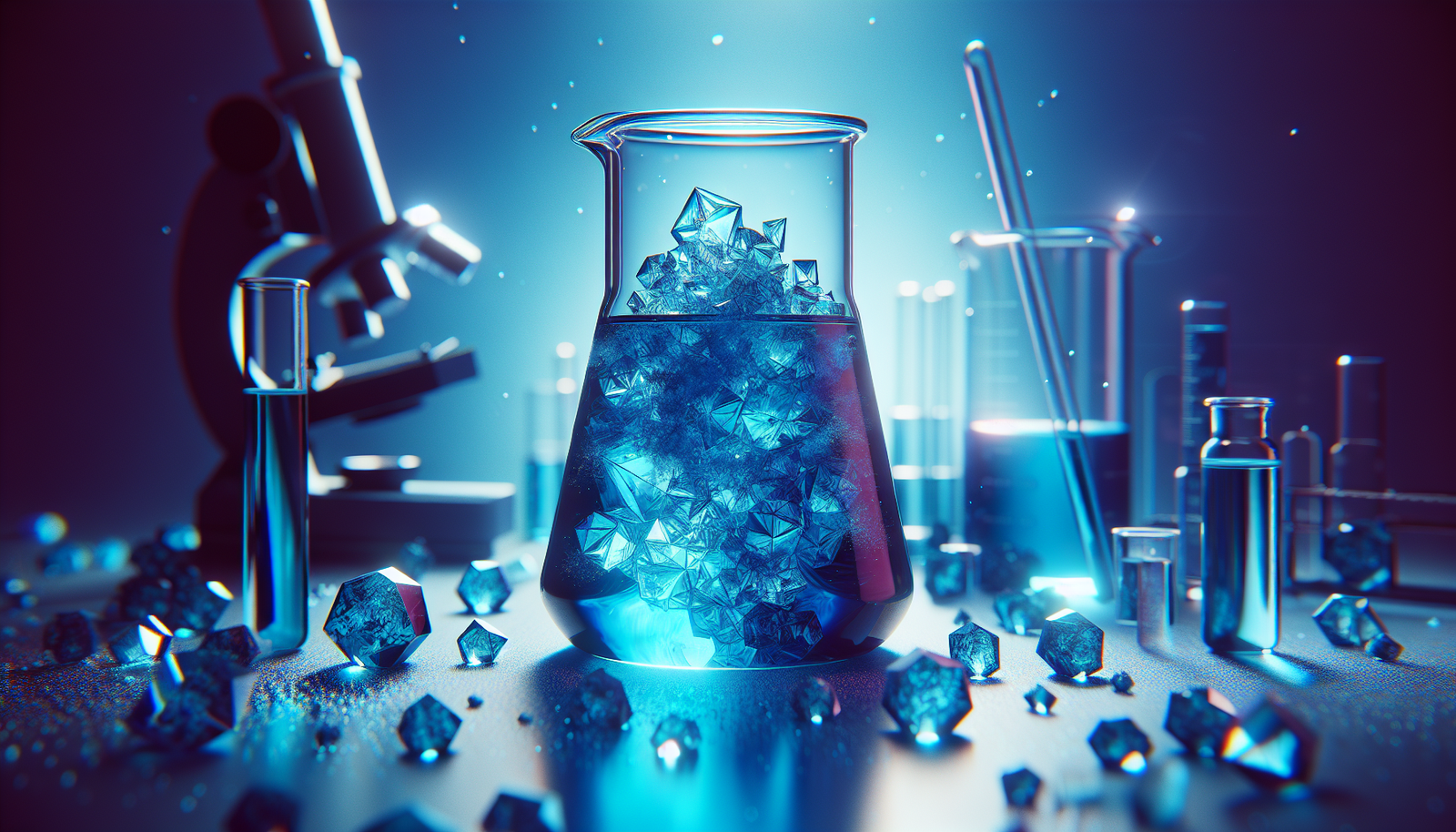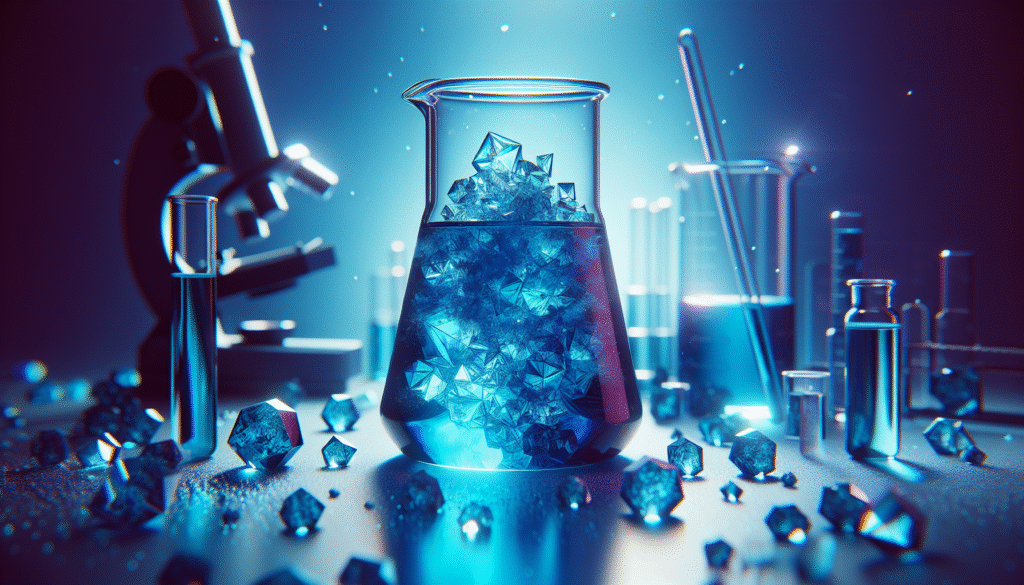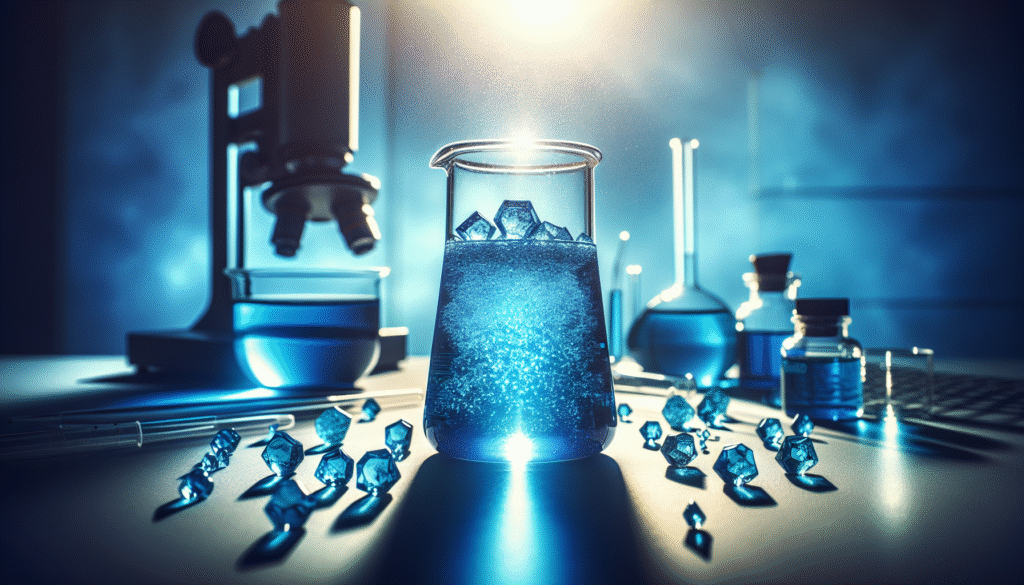
What factors contribute to the enduring popularity of certain dyes in various applications? Among the many synthetic dyes available in the market, methylene blue has emerged as a subject of intrigue due to its diverse range of uses and the scientific principles underpinning its effectiveness.
The Origins of Methylene Blue
Methylene blue, chemically known as methylthioninium chloride, was first synthesized in the late 19th century. Its discovery is attributed to Heinrich Caro in 1876, who intended to create a dye for textiles. Over time, researchers began to recognize its potential beyond mere coloration. This initial synthesis laid the groundwork for numerous applications across medical, biological, and industrial fields.
The Chemical Structure of Methylene Blue
Understanding methylene blue requires you to first examine its molecular structure. Its formula is C16H18ClN3S, consisting of a phenothiazine core, which contributes to its vibrant blue color.
Molecular Composition
- Phenothiazine Ring: This tricyclic structure is responsible for the dye’s characteristic color. The conjugated system of double bonds allows for the absorption of visible light, resulting in the deep blue hue.
- Sulfonium Group: The presence of nitrogen and sulfur atoms gives methylene blue its unique properties, such as solubility in water and its ability to participate in redox reactions.
This chemical composition is crucial for its functionality, impacting both its stain capabilities and its interactions with biological tissues.

Mechanism of Action
In both biological and industrial settings, the mechanisms underlying methylene blue’s functionality are of great interest. Its efficacy can often be ascribed to its redox properties and ability to interact with cellular components.
Redox Properties
Methylene blue is a redox-active dye, meaning it can undergo reduction and oxidation reactions. In the presence of an electron donor, methylene blue accepts electrons and is reduced to leucomethylene blue— a colorless form. The reversibility of this process makes it an excellent indicator in various applications:
- Staining: In microscopy, the reversible redox reaction allows for various shades, enhancing the visibility of certain cellular structures.
- Oxygen Saturation: Methylene blue’s response to oxygen enables it to be used as a dye in assessing oxygen levels in biological and chemical systems.
Applications in Medicine
Methylene blue’s clinical applications are a testament to its versatility. Originally used as a dye, it has been employed as a medication in various scenarios.
Treatment of Methemoglobinemia
One of methylene blue’s most recognized medical uses is in treating methemoglobinemia, a condition characterized by the presence of methemoglobin in the blood, which is unable to effectively carry oxygen. Here’s how it works:
- Mechanism: When administered, methylene blue acts as an electron donor, facilitating the reduction of methemoglobin back to hemoglobin.
- Administration: It is typically administered intravenously in acute cases, where rapid action is essential.
Other Medical Uses
Beyond methemoglobinemia, methylene blue has broad applications in the medical field, including:
- Antidote: Effective in cases of cyanide poisoning by facilitating the transformation of cyanide into less toxic compounds.
- Surgical Marker: Utilized to stain tissues for better visibility during surgical procedures.

Industrial Applications
The industrial application of methylene blue extends beyond the confines of healthcare. Its vibrant color and properties make it suitable for various processes.
Dyeing Textiles
In the textile industry, methylene blue is employed primarily due to its affinity for cotton and wool fibers.
- Colorfastness: Methylene blue demonstrates good lightfastness and washing fastness, allowing textiles to maintain their color over time.
- Eco-Friendly Alternatives: Compared to other synthetic dyes, methylene blue is often regarded as a less harmful option for dyeing processes.
Other Industrial Uses
- Biological Stain: Used in laboratories for staining cells and tissues, methylene blue enhances contrast during microscopic examinations.
- Indicator for Chemical Reactions: Its redox properties make it a valuable tool in various chemical reactions to indicate changes in oxidation states.
Environmental Impact
As with any chemical, the environmental implications of using methylene blue must be considered. Its widespread use has raised concerns regarding its persistence in ecosystems and potential toxicity.
Toxicity Levels
- Aquatic Life: Methylene blue can be harmful to aquatic organisms. Studies have indicated that high concentrations may lead to toxic effects.
- Degradation: Research suggests that while methylene blue degrades under specific conditions, its persistence in the environment is notable, necessitating careful handling and disposal.
Safety and Handling
Given the various applications of methylene blue, understanding safety protocols is essential for anyone involved in its use. Guidelines for safe handling and storage are critical to mitigate risks associated with exposure.
Personal Protective Equipment (PPE)
Whenever handling methylene blue, it is advisable to wear:
- Gloves: To prevent skin absorption.
- Goggles: To protect the eyes from potential splashes.
- Lab Coat: To shield skin and clothing from staining and potential reactions.
Emergency Procedures
In case of accidental exposure or ingestion:
- Skin Contact: Wash the area immediately with copious amounts of water.
- Inhalation: Move the affected person to fresh air and seek medical attention if symptoms persist.
- Ingestion: Rinse mouth and do not induce vomiting; seek medical help immediately.
Research and Future Directions
Ongoing research continues to unveil new facets of methylene blue’s potential. Studies are examining its efficacy in broader medical contexts and its role in innovative applications.
Neuroprotective Properties
Recent investigations are exploring the neuroprotective effects of methylene blue in neurodegenerative diseases like Alzheimer’s. Early results suggest:
- Mechanism: Methylene blue may help mitigate oxidative stress in neural cells, thus slowing disease progression.
- Clinical Trials: Current clinical trials are assessing its safety and efficacy as a treatment modality.
Avenues in Environmental Remediation
Researchers are also exploring methylene blue’s applications in environmental science, particularly in wastewater treatment.
- Adsorption Techniques: Studies suggest that methylene blue can act as a model compound for assessing the adsorption capabilities of various materials used in purifying contaminated water.
- Photodegradation: Investigations are ongoing into whether adding methylene blue to photodegradation processes can enhance pollutant breakdown in contaminated environments.
Conclusion
Methylene blue is a remarkable substance with a rich history and a variety of applications. From its origins as a textile dye to its role in medicine and industry, its versatility is a testament to the intricate world of chemistry. As ongoing research continues to evolve, methylene blue may even carve out new niches in environmental science and healthcare, affirming its place in modern science.
Understanding methylene blue’s complex properties—its chemical nature, mechanisms of action, medical uses, and environmental impact—provides valuable insights into the broader implications of synthetic dyes in both medical and industrial contexts. Its safety, handling, and environmental consequences also warrant careful attention, ensuring that methylene blue remains a beneficial tool in the realms it’s utilized. As you consider the multifaceted applications of methylene blue, you’ll appreciate both its historical significance and its future potential in addressing challenges across various sectors.